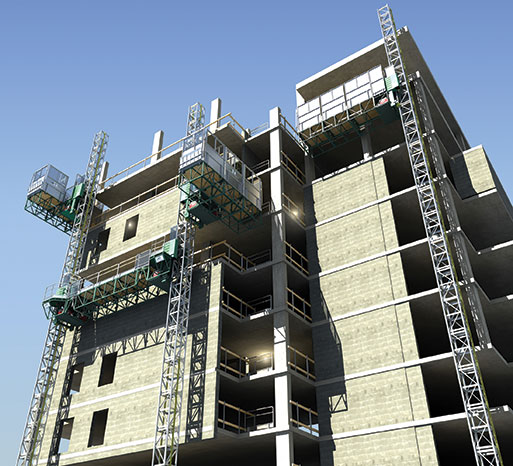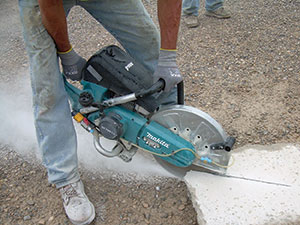Rentals
The Continued Rise of Equipment Rental
 |
| Photo courtesy of Hydro-Mobile. |
In 2013, total equipment rental revenue in North America, which includes the United States and Canada, increased 6.2 percent to reach $38 billion. In 2014, revenue is expected to grow another 7.5 percent to reach $40.8 billion, according to the latest American Rental Association (ARA) forecast from the ARA Rental Market Monitor.
Growth is projected to accelerate in all segments through 2015, before it slows in 2016 and 2017. Equipment rental revenue in 2015 is forecast to grow 10.4 percent to reach $45 billion, with an expected growth rate of 9.3 percent in 2016 and 7.7 percent in 2017, with total revenue reaching $53 billion in 2017.
To Rent or Buy: Contractors Chime InBy Jennifer Morrell |
| The best way to measure contractors’ thoughts on whether renting or buying is best for business is simply to ask. Masonry sampled its contractor members on the social business networking site LinkedIn (www.linkedin.com) to assess their thoughts on when buying is best, and when renting fills the bill.
Masonry asked: “Which is best for you right now: renting or buying? From scaffolding to heavier equipment and jobsite tools, what are your thoughts on renting versus buying, and why?” Paul Cantarella Jr., owner Cantarella & Son Mason Contractor, Pittsfield, Mass.: Ralph Woods, owner at Ralph Woods Masonry, Indianapolis: Jennifer Jones, office assistant at Stratton Masonry, Ed Stevens, president at Stevens Masonry Construction Inc., Sharon, Pa.: Hank Johnson, owner of HJ`s Stone Artistry Restorations, Back in the ‘80s, I leased excavators to do the jobs I was engaged in, like large boulder walls, water falls, etc. Today, I still would rather rent these types of machines, or anything complex. When you rent an item and something is amiss – triggers are jamming, brushes are worn, hydraulic hoses are spilling fluid all over your work – you simply make a call, and you are covered. Just get another tool. If you own some of these items, and these types of headaches occur, then you own the headache. That headache can become a huge embarrassment for you and your company, and time and money is lost. |
According to the ARA Rental Market Monitor, the general tool segment will have the highest compound annual growth rate (CAGR) at 10.7 percent during the five-year forecast. Construction and industrial equipment revenue, driven by a stronger U.S. construction market, is forecast to see a CAGR of 9.2 percent between 2013 and 2017 in North America.
In the United States alone, total rental revenue in 2014 is forecast to reach $35.9 billion, up 7.7 percent, fueled by an 8.2 percent increase in construction and industrial rental revenue and an 7.3 percent increase in general tool revenue.
Both those segments are expected to hit double-digit growth in the United States in 2015, with construction and industrial revenue projected to increase 11.0 percent and general tool 13.2 percent.
As a result, the new ARA Rental Penetration Index shows a one-year increase of 220 basis points to reach 52.9 percent.
In short, the findings support the idea that more contractors and construction companies are turning to equipment rental as an efficient way to complete projects.
“The rental penetration number is a fleet penetration number, that is how much of the total equipment fleet is comprised by the rental industry,”??says Scott Hazelton, a senior partner with IHS Global Insight, the research company that partners with ARA to compile data for the ARA Rental Market Monitor and the ARA Rental Penetration Index.
“A leading indicator of fleet penetration is sales penetration, such as how much of current year equipment sales goes into rental fleets,” he continues. “There is a consensus that sales penetration was around 60 percent in 2013, which suggests that rental fleet penetration has room to grow.”
Hazelton added that, while rental penetration tends to grow most quickly during the first part of an economic expansion, it will plateau as the expansion nears its peak.??An explicit forecasting equation for rental penetration isn’t available, but the most likely path is for another one or two years of increases at decreasing rates of growth.
While some contractors will likely begin to buy some equipment directly, Hazelton says there is evidence of a secular shift to rental: “The historical data for rental penetration requires careful study across several data sources.??However, we have spent significant time analyzing it and found that there is a pattern. In downturns, rental penetration falls.??This is a good thing for rental companies; they are able to offload unproductive assets faster than contractors can de-fleet, which means they have less capital tied up with no return.
“With the next up-cycle, rental penetration improves again,” he says.??“The important element is that in each downturn, rental gives back less penetration than it gained in the up-cycle.??What we then have is something of an increasing step function; each plateau is at a higher penetration level than the previous one.??This is compelling mathematical and even visual proof for a secular shift to rental. We do not see a down cycle in the next five years, so there is not yet a scenario in view that would yield any decline in rental penetration.”
Hazelton says the growth in revenue for the equipment rental industry continues to outpace the industries it serves with significant increases, including the 11 percent forecast for 2015.
However, according to IHS Global Insight, residential construction is forecast to grow 6.5 percent in 2014 and 19.3 percent in 2015. Commercial construction is forecast to grow at 11.2 percent in 2014, 18.7 percent in 2015 and then 31.5 percent in 2016, all of which could benefit the rental industry.
“To date, we have been seeing rental revenue grow in an economy that has been playing catch-up,” Hazelton says.??“That is, the economy has been growing, but much of that growth, simply put, existing capacity – both labor and capital – back to work.??Rental certainly did well in this environment. You still need equipment to renovate space, upgrade plants, increase production and more.??However, the forecast holds the promise of net new demand.”
Global Crane Launches Lease-to-Own Program |
| Global Cranes, the distributor of the Zoomlion RT and Crawler crane lines, has created a lease-to-own program, whereby 100 percent of the payments made go toward the purchase of a crane. With special financing from Zoomlion Capital, Global Cranes is leasing its cranes on three- to six-month plans to its U.S. clients, starting at just $5,000 a month for the RT40, a 40-ton capacity rough terrain crane. The RT40 is one of a complete line of cranes. Five models, all ANSI certified, with lifting capacities ranging from 40 to 110 tons, are available. The line is designed in the United States and built by Zoomlion. With the lease-to-own program, Global is making its cranes more affordable. Every crane leased through this program comes with a one-year, 2,000-hour warranty. Global has recently ramped up its parts and service centers, increasing both the size and staff to help streamline inquiries. All cranes are available for immediate delivery anywhere in the United States. For more information, visit www.globalcranes.com. |
Hazelton adds that this already is a trend in housing, and we will see a lot more of it in housing during the next couple of years.??With increased employment comes increased household formation – new individuals and families striking out on their own.??This translates into demand for new housing units.??In the near term, this already has led to a boom in multi-family construction, but it will increasingly include single-family homes with time, he says.
“The demand for rental equipment for residential construction has not historically been strong, although it provides some lift, especially within the general tool segment,” Hazelton says.??“However, there is a reliable pattern of nonresidential activity within 12 to 18 months of a housing recovery as the consumer demand from the new housing is met.??Housing developments typically are followed by retail, banking and health care construction and, in many cases, by new educational and other government building, such as emergency services and transportation construction as well.??This construction activity is equipment rental intensive.”
Wayne Walley is editor of??Rental Management??magazine. He can be contacted at wayne.walley@ararental.org.
??
Rental to Watch
|
 Makita has introduced its 4-stroke engine power cutter for cutting brick, block or concrete. Several points of difference – including easier starts, better fuel economy, and the ability to fill the tank with straight unleaded gas – make the Makita power cutter an ideal choice for rental or purchase. Makita has introduced its 4-stroke engine power cutter for cutting brick, block or concrete. Several points of difference – including easier starts, better fuel economy, and the ability to fill the tank with straight unleaded gas – make the Makita power cutter an ideal choice for rental or purchase.
With 2-stroke power cutters, engine seizure due to improper fuel and oil mixing is one of the most common failures. Makita 4-stroke engines are engineered to solve this problem. With no need to mix 2-stroke oil into the fuel, this means the Makita 4-stroke engine power cutter can use the same fuel as other gas-powered equipment on the jobsite. No fuel mixing gives the convenience of a “one-can” jobsite and simplified operation. It also eliminates engine failure due to improper mixing, and delivers big savings with no need to purchase 2-stroke oil. Another user pain with power cutters is difficult start-ups. The Makita 4-stroke engine power cutter has an automatic engine decompression valve engineered into the cam gear to reduce pull-start force by 40 percent. For faster maintenance, the five-stage air filtration system is easily accessible, and engineered for cleaner air and improved engine durability. The Makita 4-stroke offers several other advantages versus the 2-stroke. The Makita 4-stroke has lower noise at 92.7 dB(A) and smoother idle for continuous operation, as well as lower fuel consumption at only .45 gallons per hour. It also has lower exhaust and intake carbon build-up than 2-stroke for longer cylinder life. For improved handling, the Makita power cutter includes an integrated all-aluminum wheel kit to reduce fatigue during long, straight cuts. The wheels are positioned to engage only when the blade is lowered to the cutting surface, and they retract when the saw is not in use to prevent unexpected movement during idle. For more information, visit www.makita.com. |